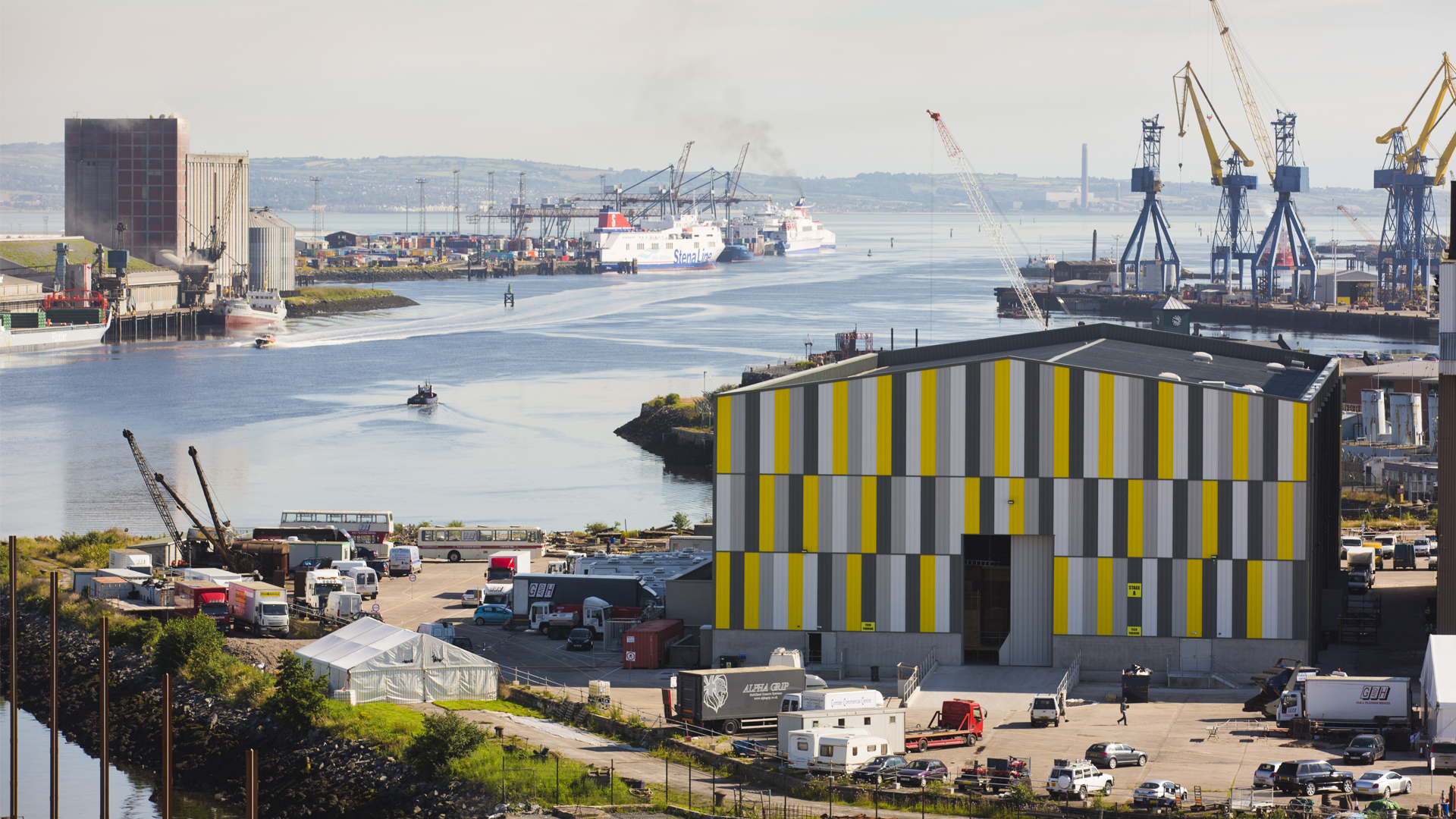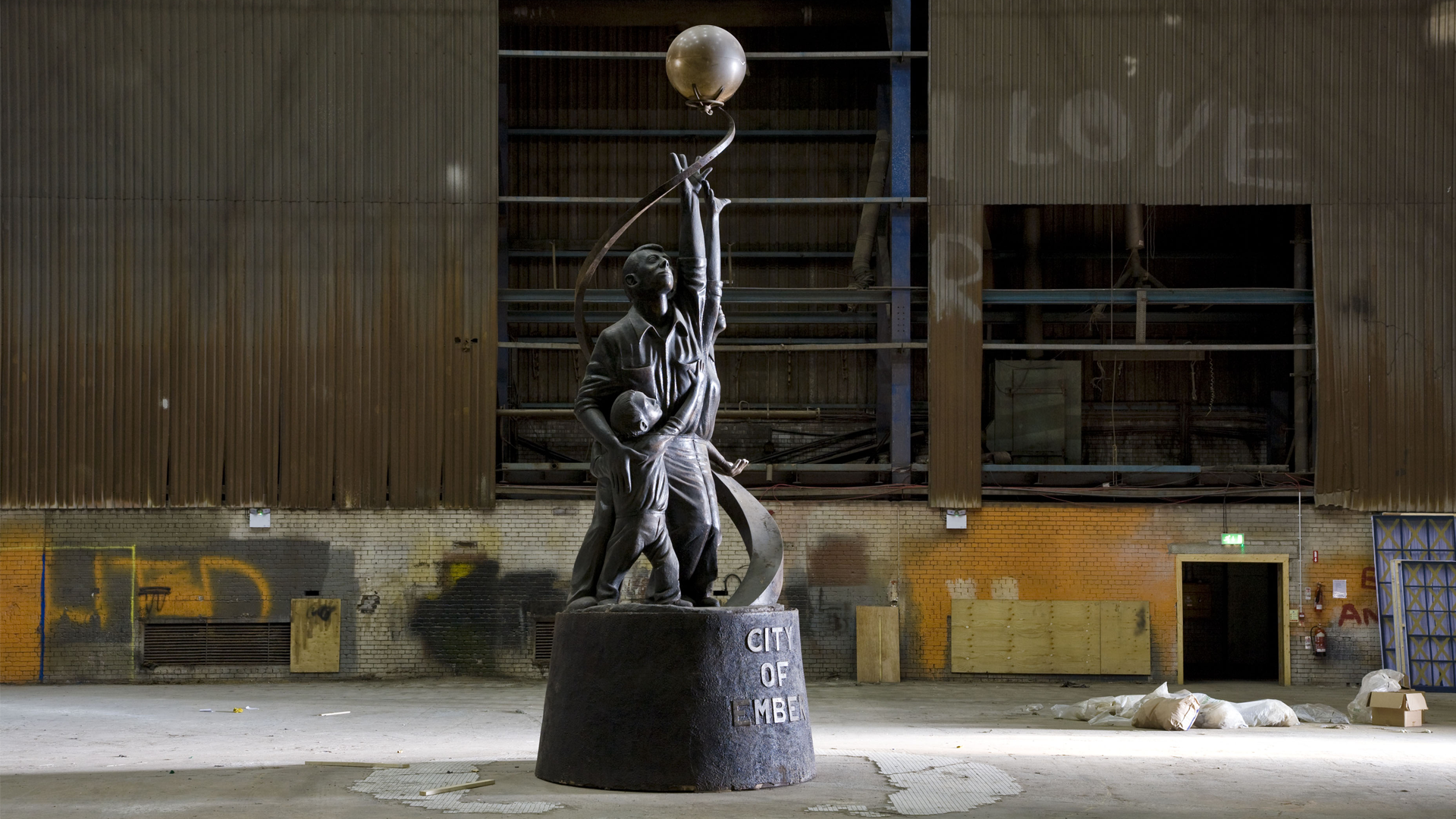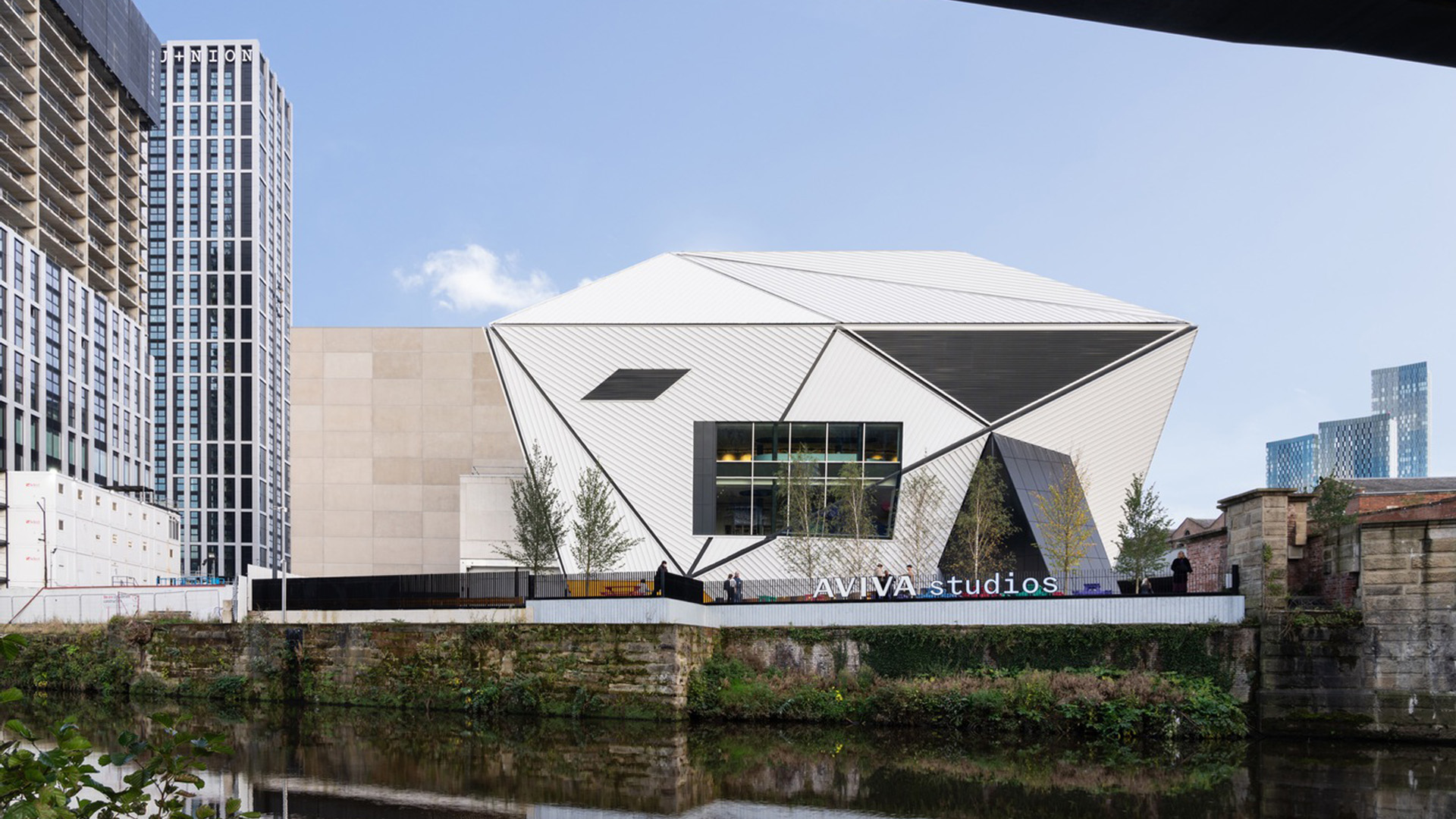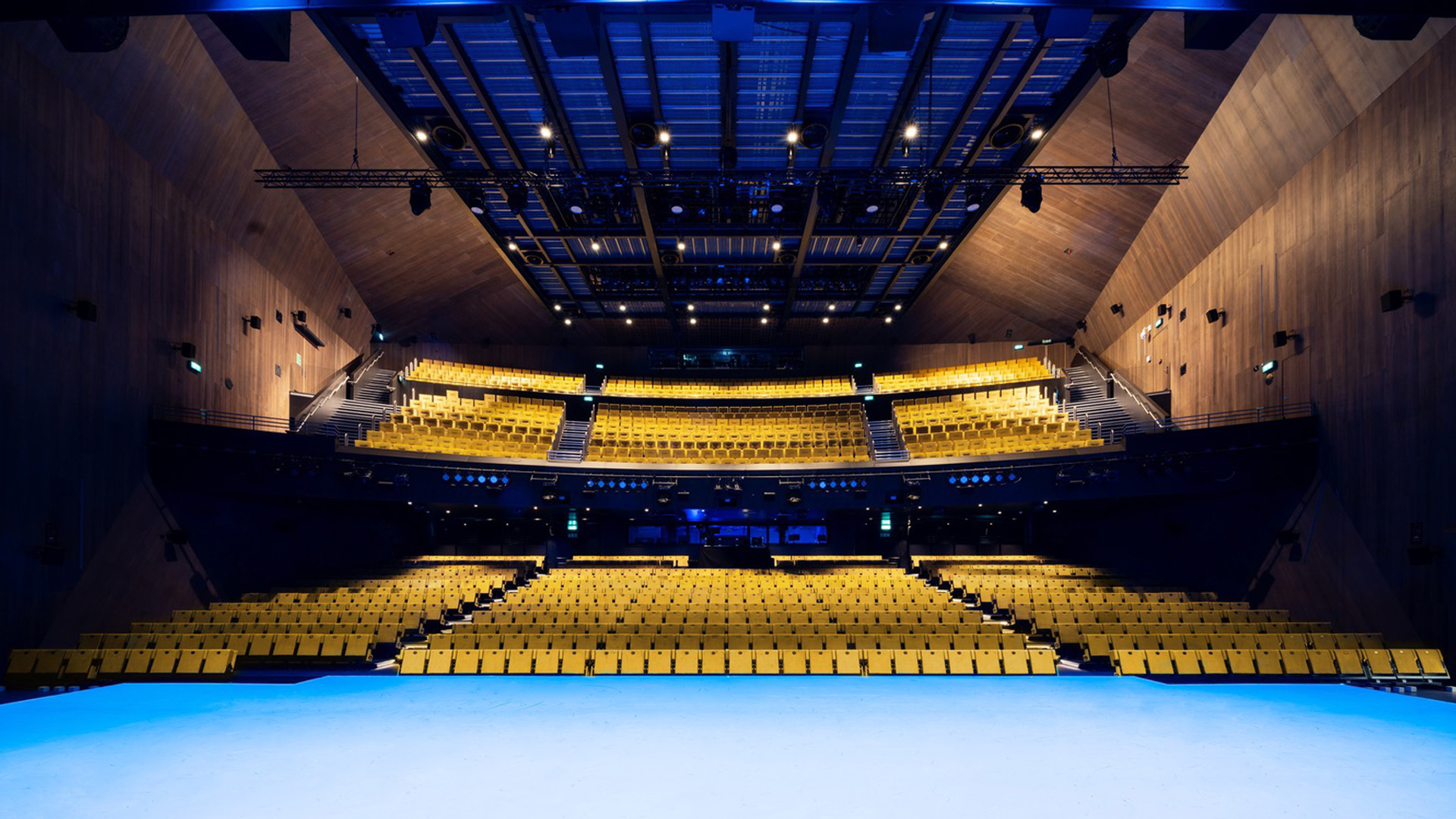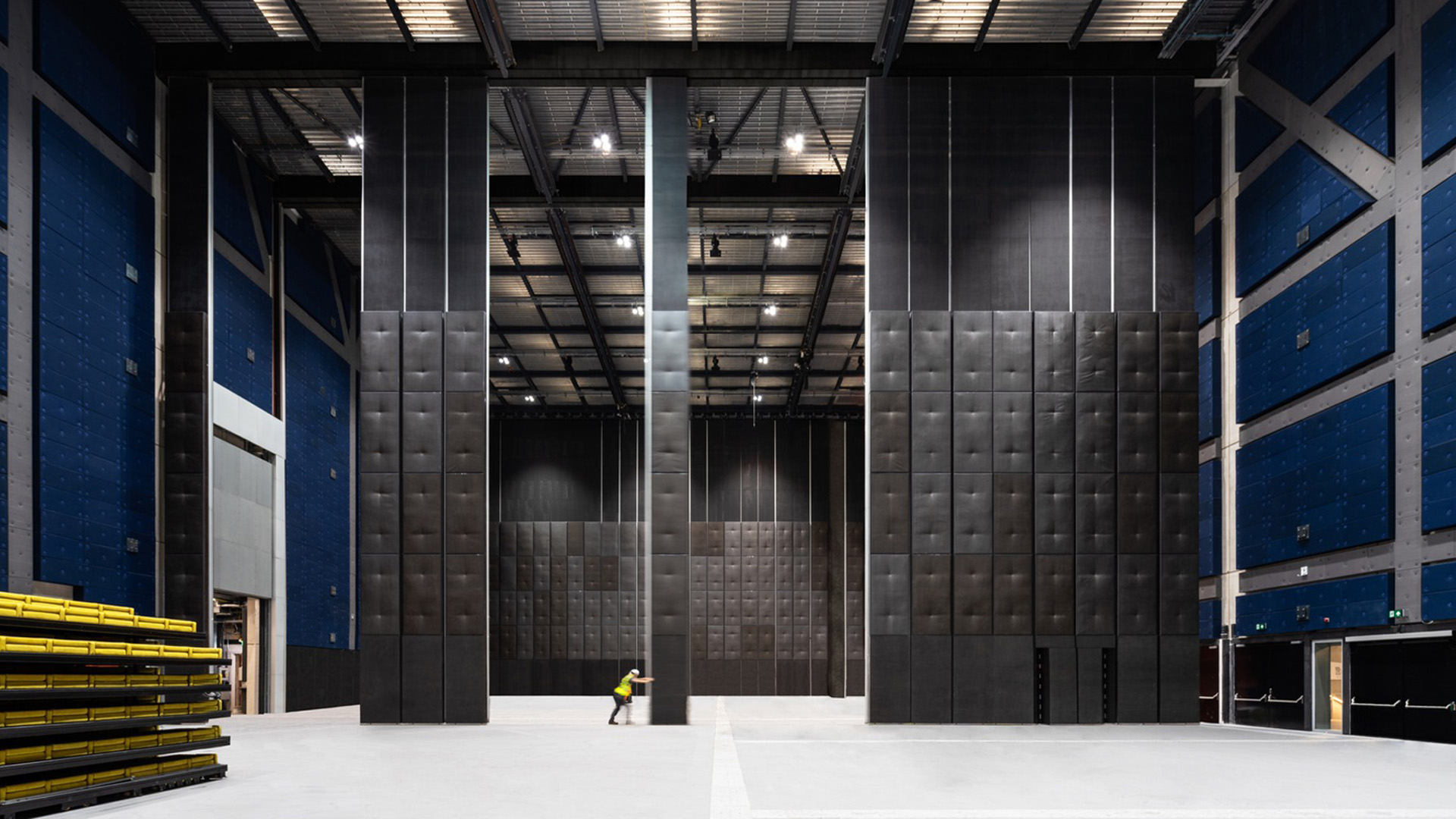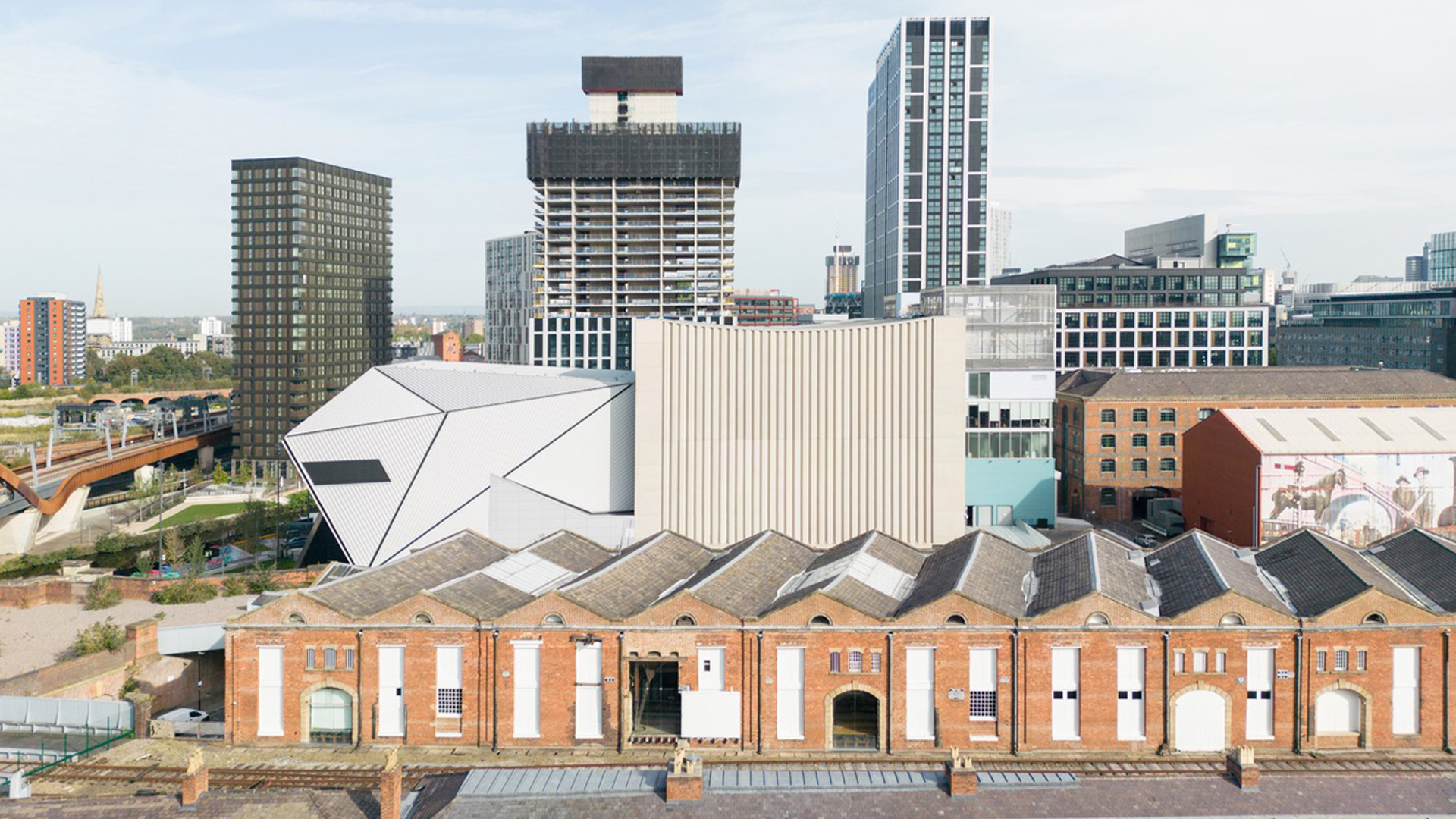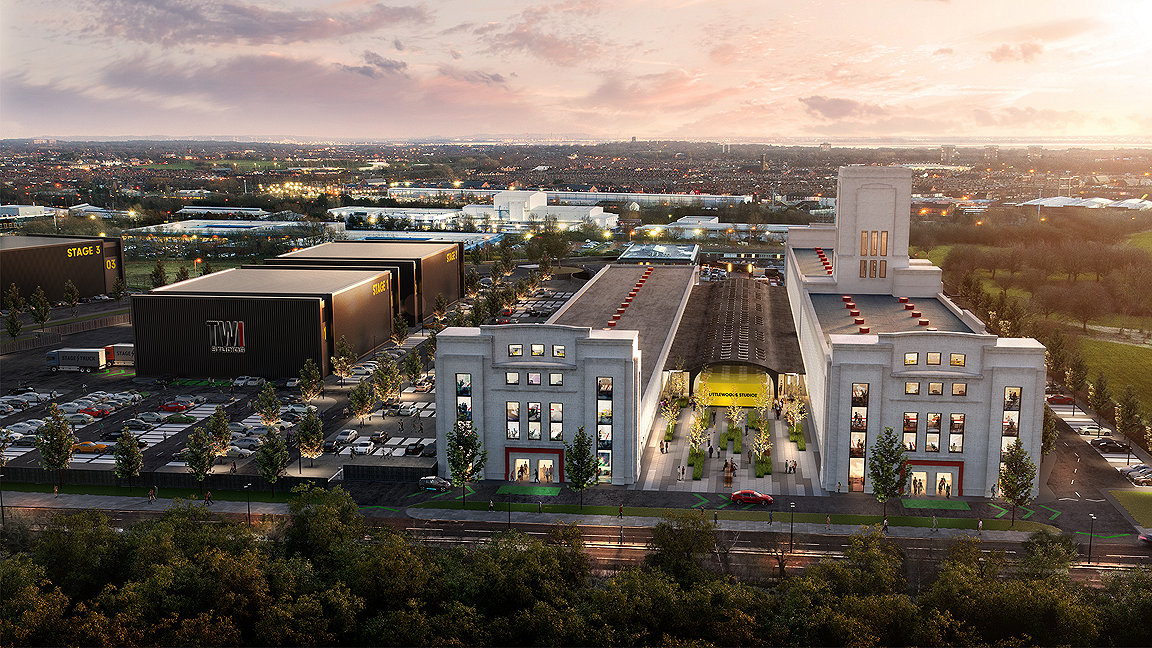
Littlewoods Project, Liverpool. Image: Capital&Centric
In the 1880s, Harvey Wilcox, an entrepreneur from Kansas, assembled farmland north-west of the small but thriving city of Los Angeles. Wilcox imagined a town built among his hillside orchards, benefiting from the warm California sunshine, the fresh air and his principles of religious observance and strict teetotalism. His wife named the area Hollywood.
By the early 20th century, and with Wilcox long dead, Hollywood had taken a different path. Its climate, cheap labour, the variety of its nearby scenery – beaches, mountains, desert, cityscapes – and, importantly, its distance from the litigious grip of East Coast cinematic patent holders, had created a thriving film industry there. In 1911, Nestor Studios, Hollywood’s first movie studio, opened on Sunset Boulevard – and, well, you know the rest.
If any location is synonymous with the film industry, it’s Hollywood. The name has become a shorthand for any successful studio system – or any aspiring one. Indian and Nigerian studios, according to some analyses, each produce more films than Hollywood, but they still carry the nicknames Bollywood and Nollywood in honour of their more established American counterpart. There may now only be five major studios in Hollywood, but their reach is global and their coffers enviable – a 2022 report by the Motion Picture Association stated that wages within the industry in California alone accounted for $28.4bn a year.
"It’s very high paid and highly skilled labour,” says Ann Gray FRICS, president of RICS and one-time employee at Paramount Studios. “What makes a studio good is – mostly – a skilled labour force.”
It’s no secret that skilled, well renumerated residents bring with them a glow of prosperity – perhaps those in the film industry even more so. It’s unsurprising then that other locations want a slice of the production pie.
Across the pond
The borough of Barking and Dagenham (B&D) sits on the furthest eastern edge of London, an area known for its miles of municipal housing and the huge Ford car plant that used to dominate its economy, once employing 40,000 people. Since Ford closed, B&D’s fortunes have been mixed: when compared to the rest of London, it falls at the bottom of many indicators of disadvantage including life expectancy, educational attainment, wage levels and economic activity.
Yet, it is here, on an unremarkable brownfield site overlooking a tube line and very little else, that the magic will happen. Hackman Capital Partners has invested £300m to build Eastbrook Studios: half a million square feet of space which includes 12 sound stages. It will be the biggest in London when it opens in 2024, rivalling more established facilities around west London such as the Sky studios in Brentford and the large facilities at Elstree, Shepperton, Twickenham and Pinewood.
"We had crews on location asking what was going to happen to the empty land,” says David Harley, a development director at B&D’s regeneration wing, Be First. Aware that there was a national shortage of studio space, Be First launched a feasibility study which suggested B&D would be a viable location. “The council put its money where its mouth was and worked on land assembly and getting planning permission which was a major help – many foreign investors are nervous of the British [planning] system.”
Lisa Dee who heads up B&D’s film unit says that in the past year there has been about 300 days of shooting across the borough. In recent years, it has featured in Marvel’s Dr Strange and Black Widow, The Batman, Netflix’s Gangs of London as well as the BBC series Luther. Crucially, that has made many production teams familiar with the area, and willing to use it again. While TV and film production has traditionally clustered around the west of London, house prices there have meant many of those working in the creative industries were pushed to more affordable east London which, again, makes B&D attractive. “People can put in a long day here and be home in 40 minutes,” says Dee.
B&D is determined to harness the skills associated with the industry for its community. Hackman’s bid for the studios came with a £1m endowment to improve skills in the borough and Dee offers students from her unit’s production bootcamp to work as runners on each shoot. “The studios are creating a legacy, they’re very multi-disciplinary: they need everyone from medics to carpenters, electricians, drivers, caterers. There’s a massive set of employment opportunities before you even get to the creative side.”
Boosting the local economy
Using a single landmark creative industry as a beacon in the local economy has precedent. When the BBC decentralised and chose Salford Quays, part of Greater Manchester, for its new location, the area thrived thanks to the influx of professionals working and living there and the many ancillary jobs that they provided. The former docks were rebranded as MediaCityUK and became a smart urban regeneration zone.
Meanwhile, in Northern Ireland, the Titanic studios have gone a long way in rebranding Belfast as a sophisticated production hub, thanks to the Game of Thrones (GoT) franchise which is, among many other productions, filmed there. Gray is adamant that for a studio to function as an economic engine for a neighbourhood it “has to have a tourism element”. The popularity of Titanic’s GoT attracts so many visitors to its studio tour as well as locations used in the region, that it has created a mini industry in its own right. “A studio can be successful and stand-alone if it is excellent technically, but for it to be a major economic regenerator it has to involve tourism,” says Gray.
It all sounds very transformative but there are experts who sound a note of caution. “To build a multi-stage lot, typically you need a cluster of studios within easy reach of each other,” says Gray. “Someone has a giant water tank [for a sea scene], someone else has a stage that can shoot a moonscape.” She gives the example of Paramount which, attracted by regional tax incentives, built a studio in South Carolina. But shooting there was limited because of the lack of versatile facilities and many productions meant flying specialists in from California. “It ended up being more expensive than shooting [in LA].”
Nevertheless, the world is in the grip of a filming boom and many governments are offering generous incentives to their own and international filmmakers. In Europe alone, France, Germany, the UK, Ireland, Poland, Hungary and Belgium are all using complex tax credits and rebates to try to attract them.
“With the expansion of streaming, the demand for film studio space has dramatically increased,” says Chris Strathon FRICS, head of EMEA Datacentres, Life Sciences and Film Studios at JLL: “Pinewood and Shepperton have been taken up on long leases by Netflix and Disney so [the industry] needs new space. We are seeing a lot of studios opening across the country – and there are more in the pipeline.”
Meeting demand
As well as Dagenham, facilities have recently opened or are opening soon in Ashford, Kent (four sound stages), Glasgow, (150,000 ft2 of studio space), Reading, Berkshire (13 sound stages) and Sunderland in the north-east of England, which will have a massive 20 sound stages, sharing more than 1.6m ft2. Each has its advantages – Ashford, for example, on the Eurostar route and close to the Channel Tunnel, could offer overflow to French and Belgian filmmakers pushed out of French facilities such as Studios de Paris. However, Strathon questions if they are all viable.
“If a studio would give a steady income stream and it makes the best use of the land, then it’s a good proposition,” says Strathon. “If you build a warehouse or a data centre then it doesn’t provide that many high-quality jobs. Film studios definitely do. But they need to make money for their investors as well.”
Liverpool, too, is in the process of expanding its TV and film production facilities. The city has long been a go-to destination for location shooting: its unspoilt Georgian streets stand in for everything from pre-revolution Philadelphia to roaring 1920s London, and its varied cityscape together with the low cost of its facilities make it the most popular location in the UK for filming after London.
Next to one of the major roads into its city centre stands the Littlewoods building, a still impressive Art Deco building despite standing empty for almost 30 years. Developers Capital & Centric aim to make the site “the Hollywood of the north” at an estimated cost of £70m. Two studios have already been erected in its grounds but the plan is to revamp the landmark building itself to create a media hub with an opening date of 2027.
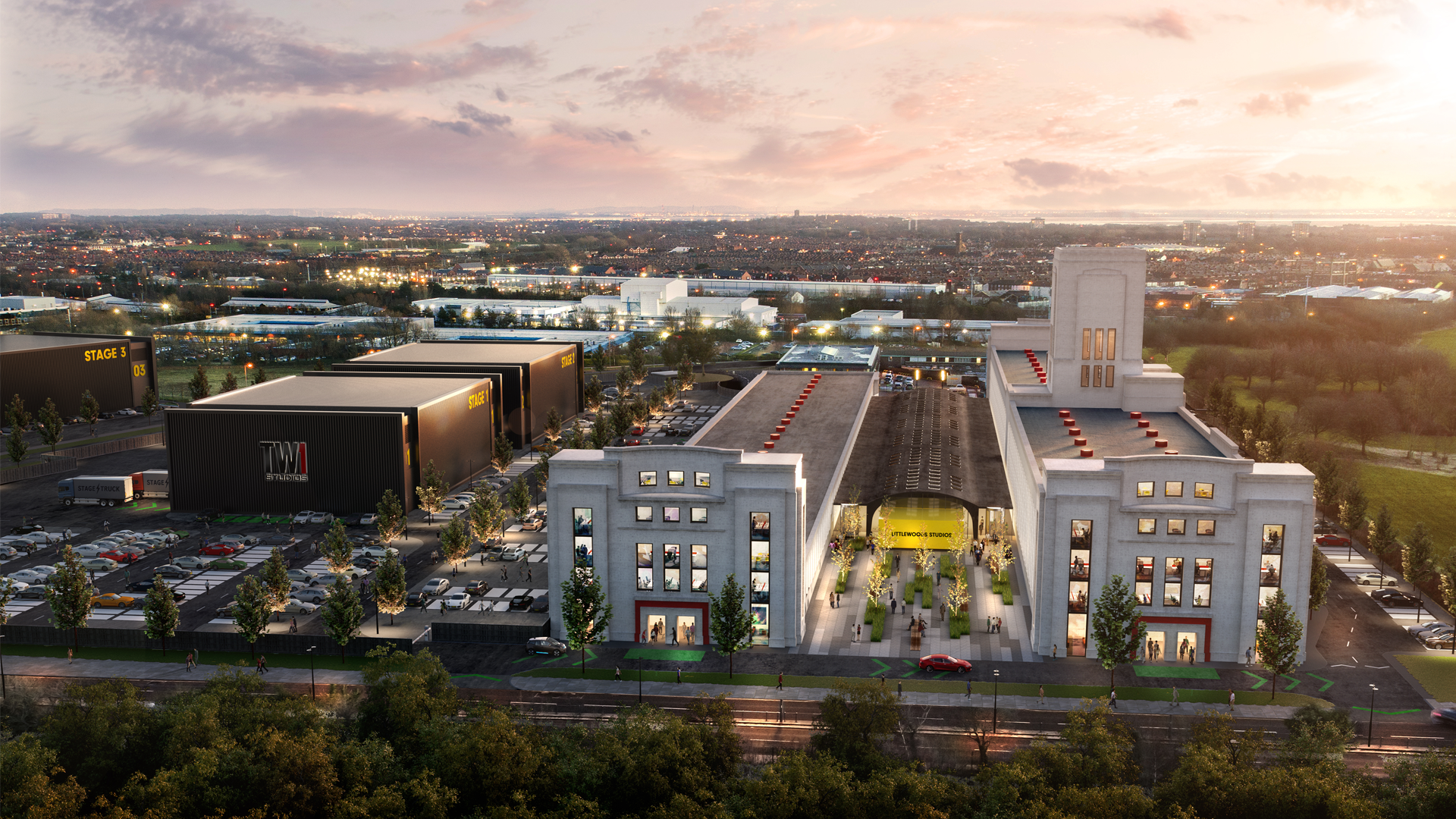
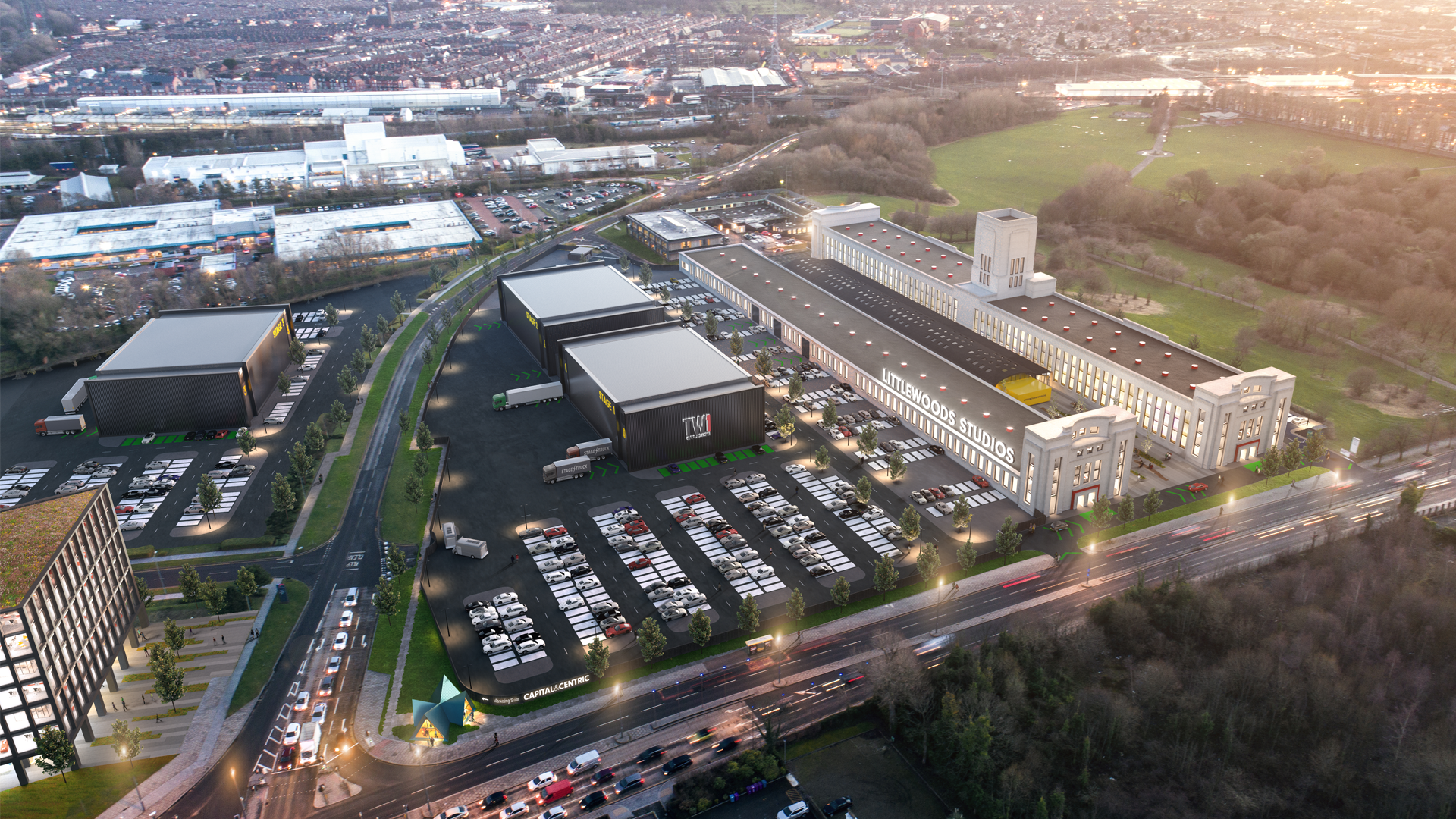
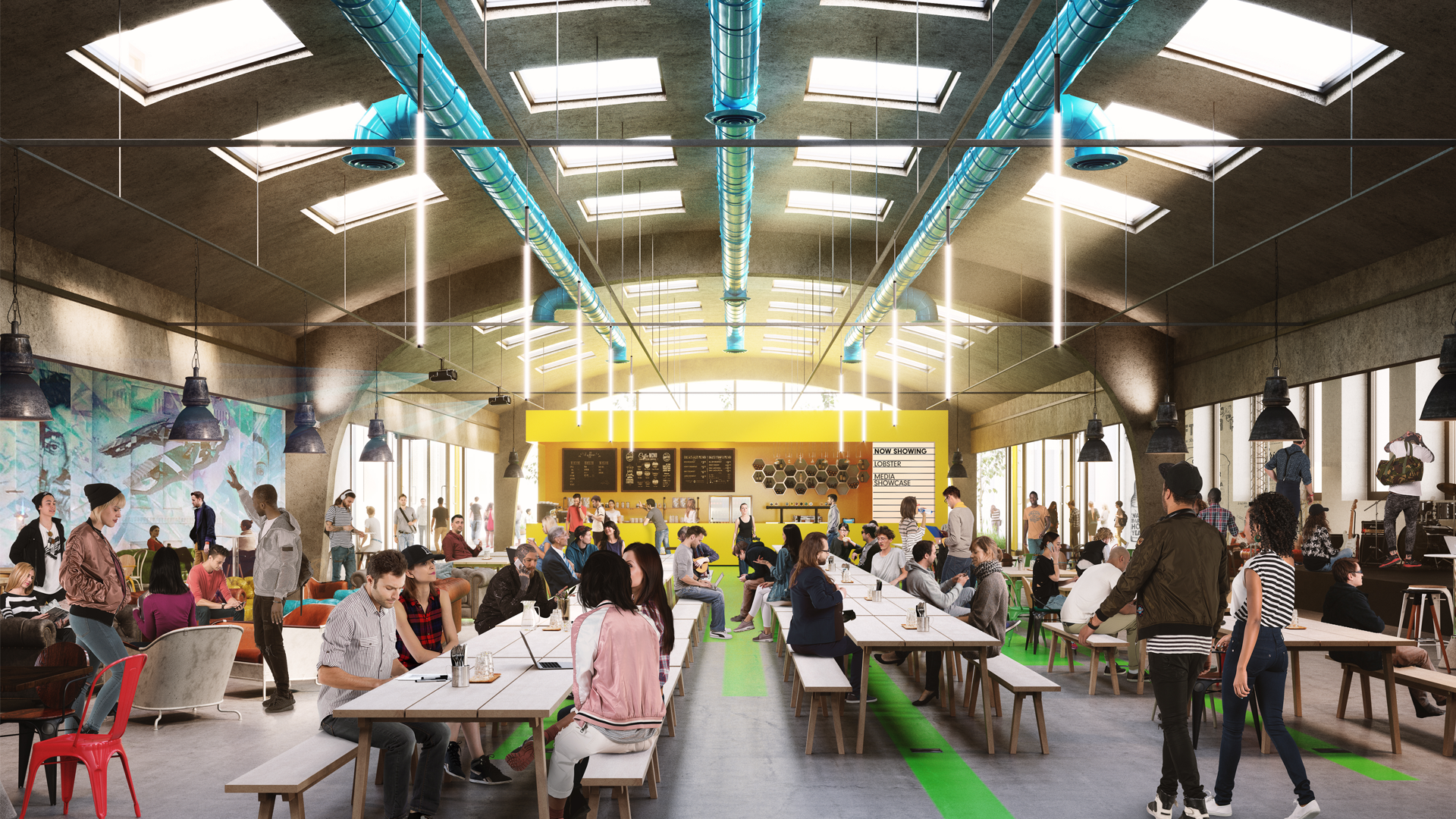
Littlewoods Project, Liverpool. Images: Capita&Centric
“We’re supporting productions through the [Liverpool City Region] Production Fund which means you get local people brought in for higher value work” Sophie Bevan MRICS, Liverpool City Council
“The sector is really good in the city,” says Sophie Bevan MRICS, director of development and major projects at Liverpool City Council. “We’re supporting productions through the [Liverpool City Region] Production Fund which means you get local people being brought in for higher value work. We want to grow our labour force. From a social perspective, bringing Littlewoods back to life is really important for the neighbourhood around it.”
Liverpool is used to harnessing its creative arts: it already has a thriving gaming sector and its music industry has made it a UNESCO City of Music. When Liverpool hosted the 2023 Eurovision Song Contest – an international music competition featuring 28 countries – an analysis by the University of Liverpool's Heseltine Institute found the net benefit for the city was £54m as 473,000 people poured into the city in the days leading up to the event. It was, however, a one-off.
Expanding the film sector could provide more reliable income. During 2022-3 financial year, 239 productions came to the city, creating up to 990 direct and indirect jobs and £28m of inward investment. It is a mighty boost to the economy of a city that, for many years, was a byword for deprivation. Its legacy and local expertise, plus its proximity to Manchester’s production teams, make Liverpool, according to Strathon, a probable success story. But ultimately, it’s all about balancing the books.
“The reason why people want to film in northern England is that it’s cheaper than London,” says Strathon. And London, with a highly skilled English-speaking workforce, is cheaper than many North American locations. “Some of the budgets for Amazon or Netflix are astronomical, so if British studios are getting a share of that then it’s brilliant. But there is a risk of over-supply. Not everyone can survive.”


